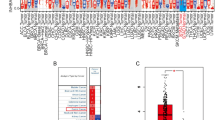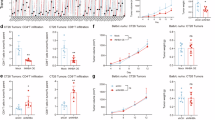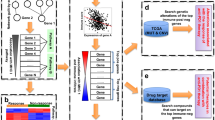Abstract
Despite extensive research, the details of the metastasis-associated biological mechanisms are largely unknown. Here, we analyze data from multiple cancers using a novel computational method identifying sets of genes whose coordinated overexpression indicates the presence of a particular phenotype. We conclude that there is one shared “core” metastasis-associated gene expression signature corresponding to a specific variant of desmoplastic reaction, present in a large subset of samples that have exceeded a threshold of invasive transition specific to each cancer, indicating that the biological mechanism is triggered at that point. For example this threshold is reached at stage IIIc in ovarian cancer and at stage II in colorectal cancer. It has several features, such as coordinated expression of particular collagens, mainly COL11A1 and other genes, mainly THBS2 and INHBA. The universally prominent presence of INHBA in all cancers strongly suggests a biological mechanism centered on activin A induced TGF-β signaling, because activin A is a member of the TGF-β superfamily consisting of an INHBA homodimer. It is accompanied by the expression of several transcription factors related to epithelial-mesenchymal transition, but not of SNAI1, and expression of E-cadherin is not downregulated. It is reversible, as evidenced by its absence in many matched metastasized samples, but its presence indicates that metastasis has occurred. Therefore, these results can be used for developing high-specificity biomarkers, as well as potential multi-cancer metastasis-inhibiting therapeutics targeting the corresponding biological mechanism.
Similar content being viewed by others

Article PDF
Author information
Authors and Affiliations
Corresponding author
Rights and permissions
About this article
Cite this article
Kim, H., Watkinson, J., Varadan, V. et al. Multi-Cancer Computational Analysis Reveals Metastasis-Associated Variant of Desmoplastic Reaction Involving INHBA and THBS2. Nat Prec (2010). https://doi.org/10.1038/npre.2010.4503.1
Received:
Accepted:
Published:
DOI: https://doi.org/10.1038/npre.2010.4503.1


